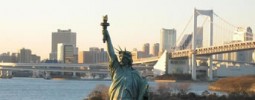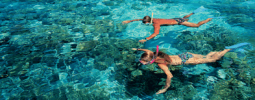Slovenia is a country in Central Europe on the southern edge of the Alps. It is bordered in the north by Austria, Italy and the Adriatic Sea in the west, Croatia to the south and east and Hungary in the northeast. Slovenia covers an area of 7,827 square miles and its capital and largest city is Ljubljana. Slovenia has always been divided in many historical regions and sub regions, in everyday language those still play a major role.
Slovenia is a young independent republic, until independence in 1991 Slovenia was the northernmost part republic of the former Yugoslavia. The president is head of state and the executive branch is headed by the prime minister and the council of ministers or cabinet, who are elected by the National Assembly.
Ljubljana is a cultural city, there is plenty of theaters, museums and galleries, and has one of the oldest philharmonic orchestras in the world. Every year, various cultural events and international festivals are organized, so everyone residents and visitors of Ljubljana can admire artists in various fields of music, theater and visual arts. Slovenia has also numerous of beautiful old buildings, such as:
The Podsreda Castle, it belongs among the most important examples of Romanesque architecture in Slovenia. It lies in the region of Kozjansko. It was built in mid-12th century in the shape of a castle, characteristic of the period. There is an enclosed rectangular courtyard with a palladium. The Stična Abbey was as an important cultural and religious centre through centuries. Stična is the oldest surviving Cistercian monastery in south east Europe. The first buildings were built on the spot between 1132 and 1136. The main Church was consecrated in 1156.
The national cuisine is varied, in many dishes, they use cheese, sausage and bacon. Some special dishes are: Ajvar, a spicy paprika-tomato mousse, Gobova juha, a soup with mushrooms, Krompirjeva juha, a potato soup and Potica, a pastry filled with nuts, cheese or herbs. The dessert is usually very extensive. The Slovenians like to drink wine, but the beer made in Ljubljana is also very popular.
The south and southwest of the country, between the capital Ljubljana and the Gulf of Trieste, is famous for its numerous caves or JAMA’s. This karst landscape includes the most imposing caves of the world. This landscape is created where limestone is affected by precipitation. This delivers spectacular sights as to the Postojna caves, those are 12.5 miles long. The caves of Skocjan, are included on the World Heritage list of UNESCO. In the caves you can admire the natural caves, lakes, waterfalls and special formations, which made this location one of the most special.
Citizens of the Schengen zone do not need a visa, just a valid passport. All those who require a visa to enter Slovenia can apply for a Schengen visa, which you can obtain at Slovenian consular offices in your country or at the consular offices of any other Member State of the Schengen Zone. A visa issued by one Schengen state is valid for all other states in the zone.










